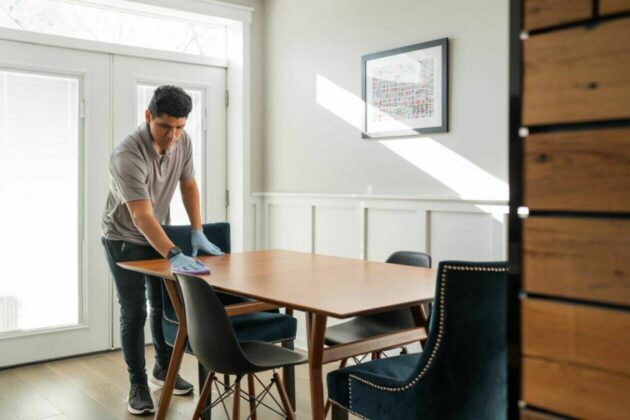The purpose of a product liability lawsuit is to hold someone accountable for damages caused by defective products.
Georgia product liability laws are similar to other states except for a few variations. The reason is that all manufacturing and distributing companies owe it to consumers to provide quality products all the time.
Where a defective or dangerous product causes harm to the user, the manufacturer will have to pay compensation. “Every company is required to make their products safe for consumers. Failure to do so is considered negligent and has legal implications”, says Attorney Robert Hammers. Though product liability laws may be similar, there are points where they differ, and knowing what the law says regarding the state you live in is vital.
Georgia Product Liability Laws
Georgia residents use thousands of products. Product liability laws make provisions for liability claims to be made on two grounds; either based on negligence or that of strict liability. What is the difference between filing based on strict liability or negligence?
In a strict liability claim, the product user only needs to prove that the defendant is the product manufacturer and that the defective product was the reason for the injury.
What are the provisions of the Georgia product liability laws?
The Georgia product liability law is in chapter 1, title 51 of the Georgia code. Section 51-1-11 gives an in-depth explanation of the law. The Georgia product liability law states that a person does not need to prove they were directly injured before filing for damages.
Instead, an individual can file a claim on behalf of a loved one or use defective products that the claimant did not directly purchase. For instance, if you use your dad’s aftershave cream and it causes rashes on your face, you can file a claim against the manufacturer.
Requirements to Prove your Case
To be awarded the compensation by the court after filing a claim, the plaintiff will need to provide evidence proving the following:
- That the manufacturer’s instruction for usage was adhered to by the plaintiff
- That the injury was a direct consequence of the defective product
- The product was defective before leaving the hands of the manufacturer
- The product in question was defective from the time of the injury
The Georgia product liability law holds the manufacturer fully responsible for the defective product with or without proof of negligence.
Categories of Defective Products
Defective products have different categories, which includes:
1. Manufacturing Defect
Manufacturing defects occur when a product becomes defective during the manufacturing process. Though the manufacturer may have intended the product to be safe, they are still held liable for any damage caused by a product that became defective during the manufacturing process.
2. Defective Design
This claim shows that the product is dangerous and turned out exactly as the manufacturer intended it. What then are the bases for considering a product as hazardous?
A defective product by design has its disadvantages far outweighing the benefits. If there is evidence that the manufacturer could have used other designs to make the product less dangerous, then the case will be ruled in favor of the plaintiff.
3. Warning Default
Suppose the manufacturer fails to warn product users of possible dangers that may arise from the normal use. In that case, the manufacturer can be held liable for any injury or death resulting from the use of the product.
Damage Limitation
The comparative negligence rule makes provision for the recovery of damage on the basis that the plaintiff was less than 50 percent culpable for the damage or injury. However, the compensation paid out is to the degree of the plaintiff’s culpability. For instance, in a $50,000 claim, the plaintiff will be awarded $30,000 if they were 40 percent culpable.
Additionally, Georgia also makes provision for the economic rule clause. The economic rule clause prevents product users from filing a claim where the damage or injury in question was not on a person but the product.
Deadline for Filing a Claim
For personal injury cases, the plaintiff has a maximum of 2 years to file a claim. If the damage was on a property and not a person, the plaintiff can file a claim within 4 years of discovering the damage. However, all product liability claims have a maximum deadline of 10 years.
Conclusion
If you have a product liability claim, engaging the services of a seasoned lawyer is crucial. With their wealth of knowledge, an attorney will advise on the best line of action to take to get compensation.
Recent Stories

For many remote workers, a messy home is distracting.
You’re getting pulled into meetings, and your unread emails keep ticking up. But you can’t focus because pet hair tumbleweeds keep floating across the floor, your desk has a fine layer of dust and you keep your video off in meetings so no one sees the chaos behind you.
It’s no secret a dirty home is distracting and even adds stress to your life. And who has the energy to clean after work? That’s why it’s smart to enlist the help of professionals, like Well-Paid Maids.

Monarch Montessori School is now enrolling infants, toddlers and three year-olds for its full-time Montessori program. We offer a seamless enrollment process which involves submitting an application for review, paying the enrollment fee and submitting the remaining enrollment materials before your proposed start date.
At Monarch Montessori School, we aim to provide an authentic Montessori learning experience. At our Alexandria location, we currently have 8 openings in our Primary classroom (ages 3-6), and 6 openings in our Toddler classroom. Additionally, there are 3 infant openings at this time.
Our first floor space is an open concept. Infants and toddlers share the same large classroom. Children ages 3-6 are in two classrooms on our second floor. Each classroom has one lead and assistant guide. We offer a year-round program, with intermittent breaks for Spring Break and Winter Break.
Scholarship Fund of Alexandria Annual Gala & Auction
Do good while having a good time at the Scholarship Fund of Alexandria’s 38th Annual Gala and Auction at the Hilton Alexandria Mark Center. The fun begins with a 2-hour open bar reception while mingling with 499 other Alexandrians who







